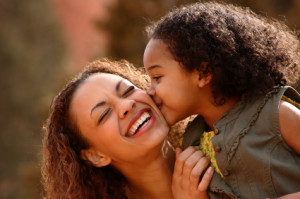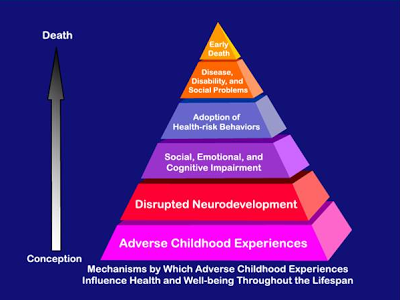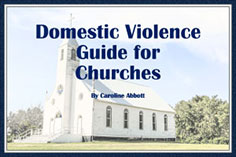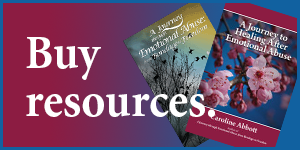In my last blog I talked about the crisis occurring in our family court system. Abusers are given unsupervised and often full custody with their children, while their protective parents are often required to have supervised visitation with the children they are trying to protect. The more the protective mother* tells the court about the abuse her children experience, the less parental time she receives with her children. This is because the court often believes the mother is lying to hurt the abusive father – that she is attempting to “alienate” him from her children, rather than trying to protect them.
This places an average of 58,000 children with their abusive parent in the United States every year**. Because children are in custody court at age 8 (on average), and remain in custody until age 18, there are approximately 580,000 children in the United States who currently have unsupervised visitation with a parent who is abusing them emotionally, physically and/or sexually. Check out the stories of 40 protective parents here:
Is there anything that can be done to reverse this tragedy?
Yes, there is.
I recently attended a Battered Mother’s Custody Conference where I learned some new ideas for protecting children in our family courts.
#1 – The United States Department of Justice provided a grant to support a major study by Dr. Daniel Saunders of the University of Michigan. In “The Saunder’s Study,”*** which was completed in October 2011, Dr. Saunders compared the self-reported level of knowledge about domestic violence to the actual knowledge judges and custody evaluators have. He found many of these court personnel hold certain beliefs they base their custody decisions on, rather than the facts of the domestic violence cases they hear.
One cluster of beliefs by evaluators (and judges) were:
- Mothers often make false allegations about DV and child abuse
- They purposely alienate their children from the abusive parent
- DV is not an important factor in making custody decisions, and
- Children are hurt when abuse survivors are reluctant to co-parent with the abusive parents.
All of these beliefs were found to be false. In fact, the study found mothers in contested custody make deliberately false reports only 1.3% of the time. In contrast, fathers in contested custody cases were sixteen times more likely to make deliberately false allegations.
The Saunders’ study supports earlier findings of substantial gender bias against women litigants. At least forty states and many judicial districts have previously established court-sponsored gender bias committees that demonstrated bias against women. The Saunders’ study found that evaluators and other court professionals believe in male dominance and patriarchy but are not adequately trained in DV. They also often believe in the myth that women frequently make false allegations, and they minimize or deny valid complaints about domestic violence. These beliefs demonstrate how evaluators and other court professionals contribute to gender bias.
How can the Saunder’s study be used to change a judge’s patriarchal beliefs, and natural bent to side with the (male) abuser?
In order to encourage the judge to be open to research and practices that are significantly different than he/she is used to, we need to present it in as non-threatening way as possible. Emphasize that the Saunder’s study is brand new research. The message is that the judge is not being blamed for past decisions before the research was available. If the opportunity arises, we can acknowledge that the judge might have been hampered by poor lawyering and unqualified evaluators. Indeed, that is supported by the Saunders’ study. One of the important points in the research is that the training required of judges and other professionals does not provide them with necessary domestic violence expertise, so it is important for judges to be open to information provided by DV advocates or other similar experts. Tell the judge the new research has found most court professionals do not have the DV training they need, they often believe the myth that women frequently make false allegations and this often leads to decisions that place children in jeopardy.
#2 One of the most interesting outcomes of the Saunder’s study was domestic violence advocates are the only professional that have exactly the domestic violence training needed to recognize when domestic violence is present and to formulate responses to protect the victims’ (and their children’s) safety.
Currently, judges in family court rely on psychologists or custody evaluators (who are often lawyers) to give recommendations about custody. However, traditionally neither of these types of experts have specific training in domestic violence. This is where a domestic violence advocate can be a huge help in a custody hearing. While at the Battered Mothers Custody Conference, many DV advocates, (myself included) were trained to act as experts in custody hearings.
#3 While testifying in family court, DV advocates can reference recent research that can be used to protect children in our family courts. In addition to the Saunder’s Study, they can also use the Adverse Childhood Experiences (ACE) Study****. Between 1995 and 1997, the Center for Disease Control conducted a study of Kaiser Permanente patients. In this study, they asked 17,421 patients to list whether they had experienced 10 types of childhood trauma:
- Psychological abuse
- Physical abuse
- Sexual abuse
- Battered mothers
- Emotional neglect
- Physical neglect
- Separated parents
- Parents with mental illness
- Parents with substance abuse problems or
- Parents with criminal behavior.
Of the 17,421 adults surveyed, 80% were white (including latino), 10% black, 10% Asian. 74 percent were college educated. Because they were members of Kaiser Permanente, they all had jobs and good healthcare. Their average age was 57. Out of these 17,421 “average” adults, one in six people had an ACE score of 4 or more, and one in nine had an ACE score of 5 or more, indicating adverse childhood experiences are more common than previously thought.
The study found a link between childhood trauma and adult onset of chronic disease, as well as mental illness, doing time in prison, work issues and absenteeism. They also found that the more ACEs a person had, the higher their risk of medical, mental and social problems as an adult. People with 4 ACEs had 240% greater risk of hepatitis, 390% greater risk of emphasema or chronic bronchitis, and 240% higher risk of sexually transmitted disease. They were twice as likely to be smokers, 12 times more likely to have attempted suicide, seven times more likely to be alcoholic, and 10 times more likely to have injected street drugs.
People with high ACE scores are more likely to be violent, to have more marriages, more broken bones, more drug prescriptions, more depression, more auto-immune diseases, and more work absences. Higher ACE scores were even linked with early death.
You may be asking how this could possibly be good news?
Because of the ACE study, there is now ample proof domestic violence causes long-term mental and physical health problems for the children who experience it. Traditionally, courts have not looked at the overall toll domestic violence and trauma have on the children who live in the home. You may often hear a judge or custody evaluator say, “There was one fight, but the parents are separated now, so this is no longer an issue.” They have not looked at the pattern of power and control that exists in the home, and the amount of fear the children have of their abusive parent.
Domestic violence advocates are the perfect people to explain this dynamic to court personnel. DV advocates can also explain that the best way to ameliorate the damage from ACEs is to:
-
Safeguard the child from future abuse. This means the child should not have unsupervised contact with the abusive parent.
-
Get the child exercise, psychological therapy, and give them anti-inflammatories, (stress causes inflammation in the body which can be overcome with anti-inflammatories). Because of these recommendations, the non-abusive parent should be the person assigned to make medical decisions for the child.
-
Allow the non-abusive, safe parent to give the child plenty of emotional support. This means the safe parent should be awarded custody of the child.
#4 Protective mothers, you are not alone in your fight to rescue your children from the family court system. Many women all over the United States have bonded together to fight for their children. Here are a few of the organizations I learned about at the conference I can recommend. If you find no groups in your area, contact these groups, and they can refer you to help in your area:
Battered Mother’s Custody Conference
Center for Judicial Excellence
Barry Goldstein is an attorney who has been representing victims of domestic violence for 30 years. He now provides workshops, judicial and other trainings regarding domestic violence particularly related to custody issues. He also serves as a consultant and expert witness. His website has a great many resources.
I pray all you protective parents will not lose heart while you wait for the family court system to change. I heard many sad stories while at the Battered Mother’s Custody Conference of really good, loving mothers who have had their children taken away from them and given to their abusers. I was impressed by the tenacity of these mothers, some of whom have not seen their child(ren) in five years. These mothers have found ways to continue being mothers, even though they have been denied access to their kids. Some were allowed to see their child one hour a week, or call periodically. These moms poured all their mothers’ hearts into those brief moments, making the best of an impossible situation. Others who had no contact at all with their kids wrote letters to give to them “one day”. Still others used their energy to fight for the mothers of other children, and to keep up their emotional and physical health for the sake of their children. To all of you, I salute your spirit and courage.
I pray these words from the Apostle Paul in 2 Corinthians 4:8,9,16-18 will encourage you:
We are hard pressed on every side, but not crushed; perplexed, but not in despair; persecuted, but not abandoned; struck down, but not destroyed. Therefore we do not lose heart. Though outwardly we are wasting away, yet inwardly we are being renewed day by day. For our light and momentary troubles are achieving for us an eternal glory that far outweighs them all. So we fix our eyes not on what is seen, but on what is unseen, since what is seen is temporary, but what is unseen is eternal.
May you feel the Lord’s presence as you walk this painful journey. Caroline
*In the majority of cases, the abuser is the father, the protective parent the mother. Occasionally, these roles are reversed.
**http://americanmotherspoliticalparty.org/ampp-article-library-family-court-custody-abuse-dv/1-research-articles-family-court-bias-custody-abuse-battered-moms/41-how-many-children-are-court-ordered-into-unsupervised-contact-with-an-abusive-parent-afte
***http://www.barrygoldstein.net/important-articles/using-the-sander-s-report-part-one?font-size=larger
****http://www.huffingtonpost.com/jane-ellen-stevens/the-adverse-childhood-exp_4_b_1943772.html





This article is full of valuable information. This information needs to be put in the hands of so many people that can benefit from it.
You’re doing great work!
Thank you so much Katelin! I appreciate you taking the time to comment, thanks!
Very helpful!